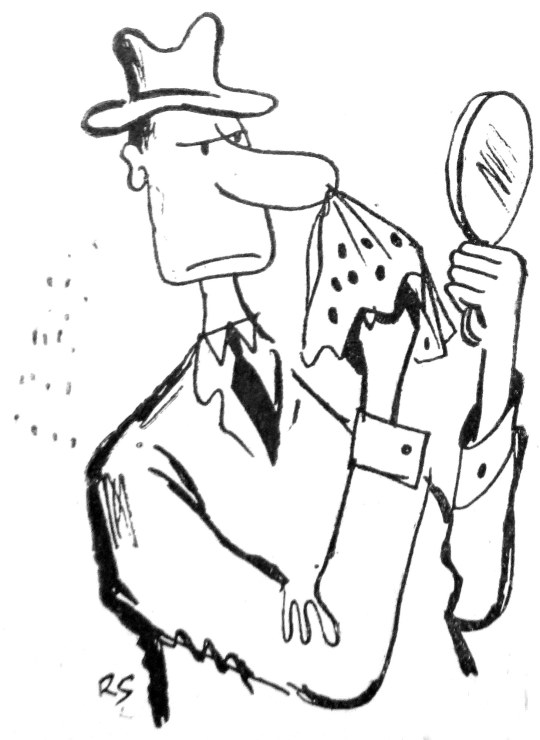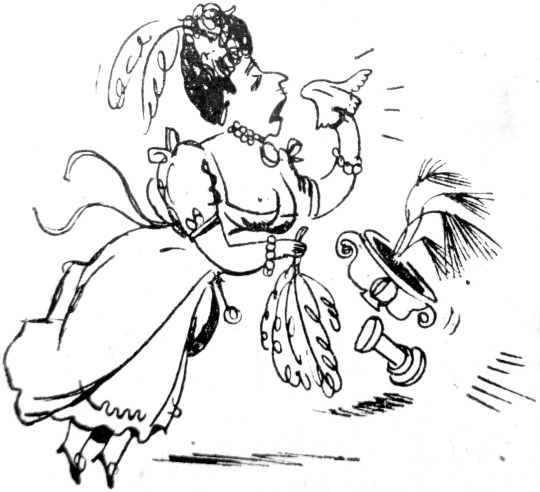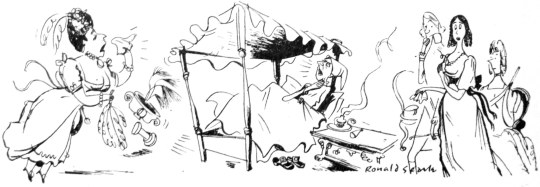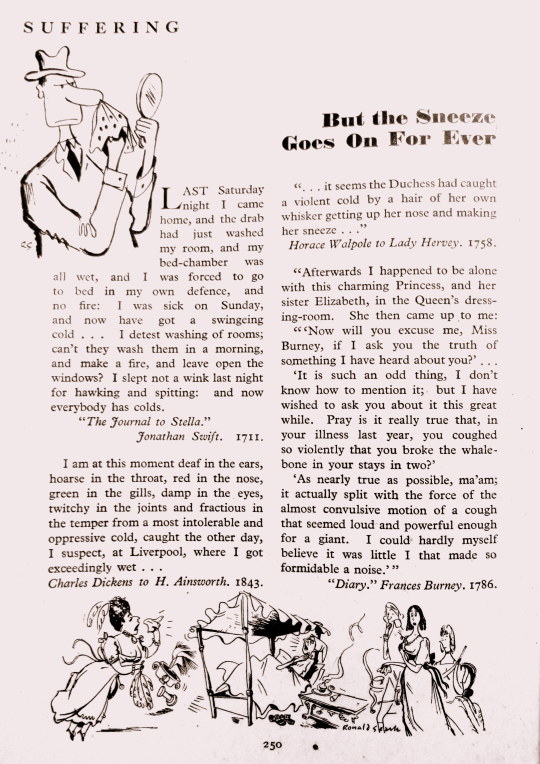Ealing Studios have many wonderful films, but there was a period of time when they would hire fine-art artists to design promotional ephemera and posters.
A good example is for the movie ‘Painted Boats’ from 1945. The artwork for the film was designed by John Piper. The painting of the Canal boat has a graphic device painted in by Piper, like the top of a decorative headstone.
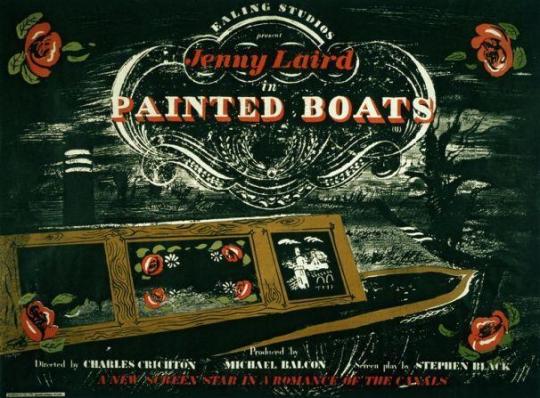
The Movie Poster for Painted Boats, 1945.
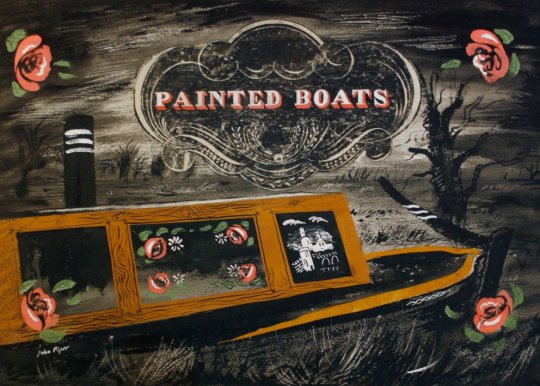
The original painting for the film poster by John Piper.
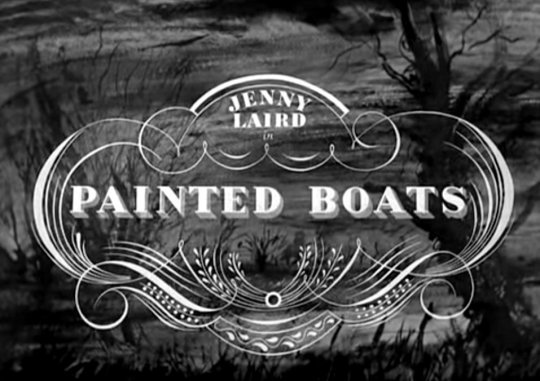
In the credit sequence of the film there is a stylised version of the graphic device used by John Piper – I am unsure if Ealing Studios gave him it to paint first, or if he painted it and they cleaned it up for the film. The backdrop to this maybe a pro-type painting used as the movies title sequence as the trees are not the same in the image above.
The posters for Ealing Studios films feature artwork by many of the era’s greatest artists including John Piper, Edward Bawden, Eric Ravilious, Edward Ardizzone and Mervyn Peake, while the acting talent is a roll-call of many of Britain’s greatest performers. †
Even when commissioned, the studio didn’t always use the artwork by the artists, ‘The Bells Go Down’, 1942 was John Pipers first work with Ealing and although paid for his efforts, they didn’t use the artwork for the poster.
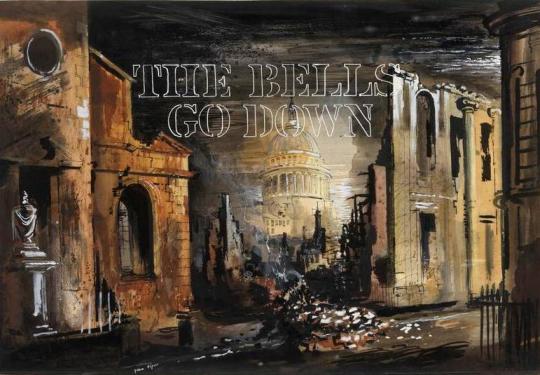
The Bells Go Down, 1942. Poster prototype design by John Piper.
Ealing’s advertising department was headed up by S. John Woods, who trained as an artist and graphic designer, before working in a variety of advertising roles, including a stint at Twentieth Century Fox in the 1930s. In 1943, he joined Ealing to help realise the vision of the studio’s chief publicist, Monja Danischewsky.
Unusually for a designer working in film advertising, Woods wasn’t afraid to bring politics into the equation. Throughout the 1930s he moved in artistic circles that included Ben Nicholson, Henry Moore and Barbara Hepworth, soaking up the energy and fervour of the interwar generation, cultivating a love of British abstract and surrealist art and actively contributing to exhibitions and articles challenging the established order.
Below is a curious mixture of Ealing Films own graphics department and artists work, in this case using Ronald Searle’s cartoons based on the film and using his St Trinian’s girls series.
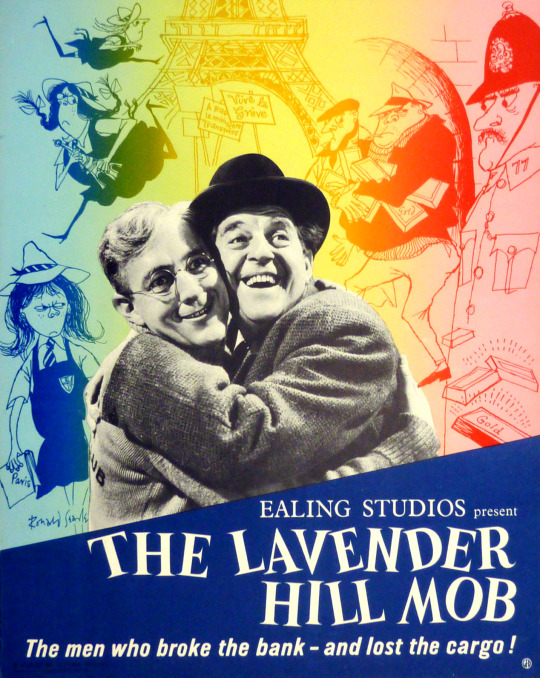
The Lavender Hill Mob – Ealing Studios with decorations by Ronald Searle, 1951.
Below is another drawing by Ronald Searle for the Danish version of the poster. The drawing of Alex Guinness is wonderful.
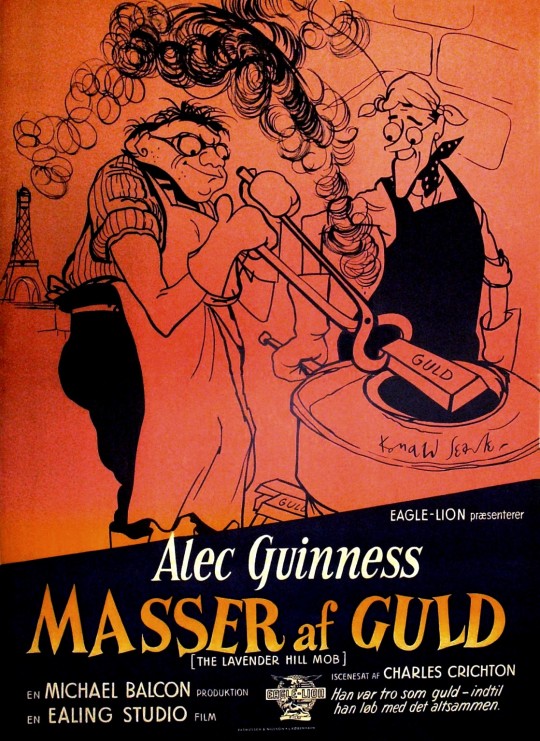
Danish Poster for Masser af Guld – Lots of Gold. The Lavender Hill Mob, 1951.
The artist John Minton also made two poster designs for Ealing Studios for the movie ‘Eureka Stockade’, one landscape, one portrait. At first it might look like they are the same image cropped, but the way the man above the cartwheel handles his gun, the riders at the end of the stockade and the man with the razor-blade behind the soldier show they are not the same image, just very similar.
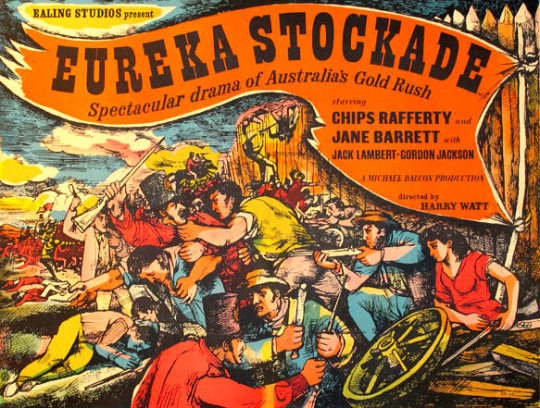
John Minton – Eureka Stockade, 1949
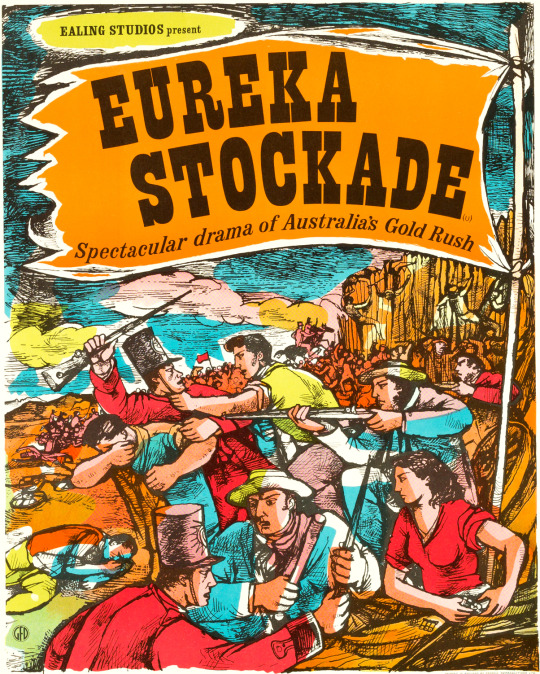
John Minton – Eureka Stockade, 1949
Here are two Posters by Edward Bawden, one for ‘Hue & Cry’ and the other is ‘The Titfield Thunderbolt’. The mixed perspectives of this and the light and dark boys used in both are wonderful. Both posters have hand-drawn typography.
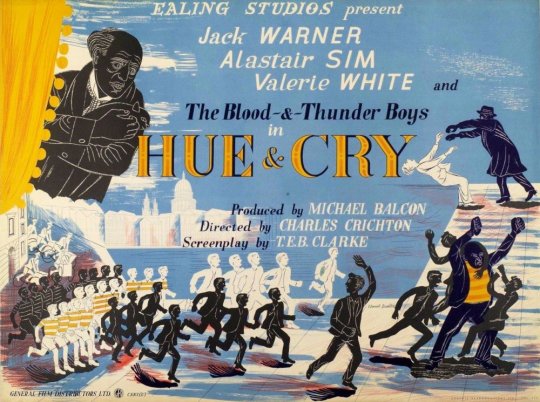
Edward Bawden – Hue & Cry Poster, 1947
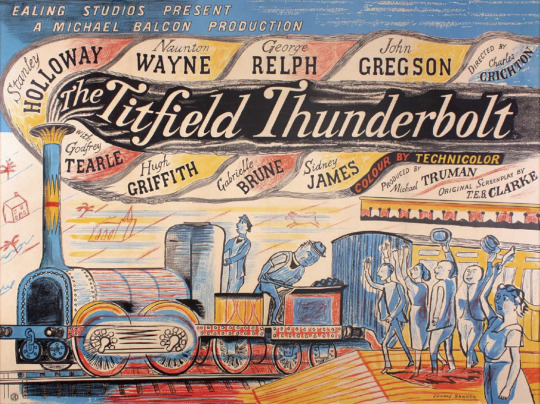
Edward Bawden – The Titfield Thunderbolt Poster, 1952
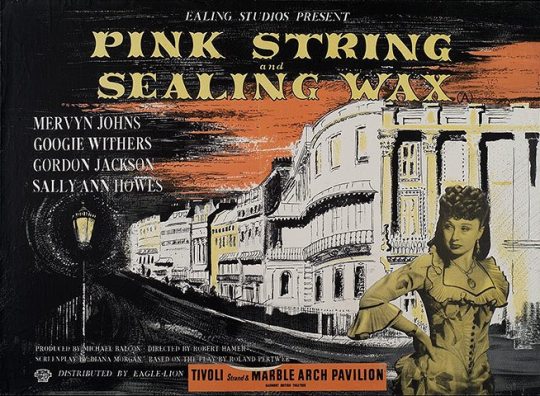
John Piper – Pink String and Sealing Wax Poster, 1945.
Above is the poster designed by John Piper and like in ‘Painted Boats’ the opening credits also used a similar design to the poster. The opening credits image actually comes from his ’Brighton Aquatints’ folio of prints, published in 1939. The poster must be adapted from the drawing.
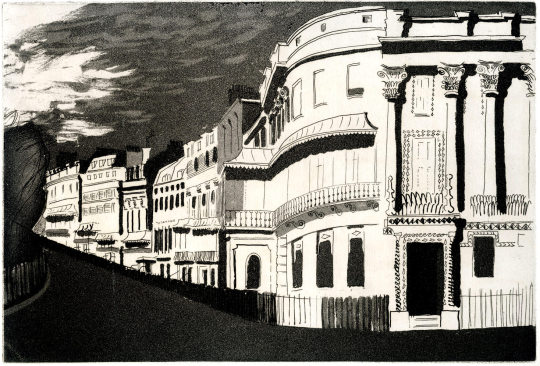
John Piper – Kemp Town, 1939
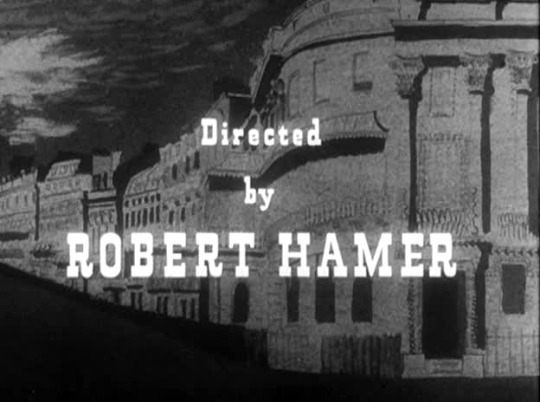
† Page 2 – Press Release – Ealing Films – Light and Dark
‡ Ealing and the art of the film poster
